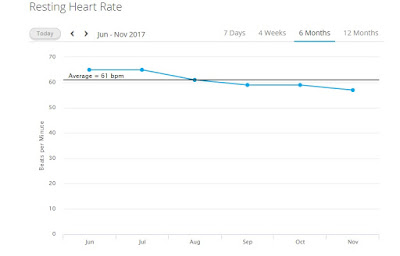Garmin fenix 3 HR
Although I am still working on the English edition of heart rate based pace management for hiking, I started thinking about how we can really set the target heart rate for hiking. I did not post about this topic in the English blog. However, I published a book in Japanese and posted to the Japanese blog in the past. The basic idea of this concept is trying keep the heart rate in heart rate zone 2 ~ 3 during hiking. That is one of my conclusion based on my past hiking data to Mt. Whitney. This works very well at least my case. On the other hand, I got some feedback that it might not work some people especially who do not training regular basis. That is why I am looking into this topic again and looking for a better method.
I think the concept is still valid and works. However, the problem is probably those people might not be ready for some hiking or they might not be good enough fitness condition for a particular hiking. It is a similar idea that running a full marathon. I think pacing is key to finish full marathon and it is probably true. However, it is also true that people need to have enough strength to finish a full marathon. So they need to prepare or train to improve their fitness situation. Without such effort it is probably hard to finish a full marathon. I think a similar concept may apply for hiking as well. If it is a short hiking like up to a few hours walking, then I guess many people might be able to achieve the hiking without training for hiking. However, if it is a several hours or more, then people might need to prepare for the hiking to achieve.
Here is what I found out from my training and its data in the past. If I stopped training for a while especially due to an injury, then I felt it was heard when I resumed training. After really bad injury like stress fracture on my leg, I had to stop training for more than several months. Then it was getting really hard when I resumed a training. Even if I started really slow pace, the heart rate was getting high in a short time and it was also hard to continue running as well. However it was getting better after a few months if I was continue to train. The heart rate was getting more stable and I could maintain a similar heart rate if the pace is reasonable.
So if people who do not do training regular basis, they might not be able to maintain their heart rate in a reasonable range for long time. Therefore even if we can estimate their heart rate zone from their age, it might be heard to keep the heart rate within the range during hiking. The heart rate might getting really high in a short time and they need to take a rest to recover from such heart rate. Therefore, the key is not only finding a target heart rate, but they also need to do some training to prepare their body for a hiking.
Therefore what I am looking for is:
- Sets a target heart rate first either based on age or training data
- Tries the target heart rate for a reasonable period to understand their fitness situation
- Do some training to prepare a target hiking destination
The problem is I might not have a good sample data to show. But I tried to propose a reasonable process based on some my experience. If anybody give me some feedback for the method I will try to introduce, it would be really helpful for this procedure.









